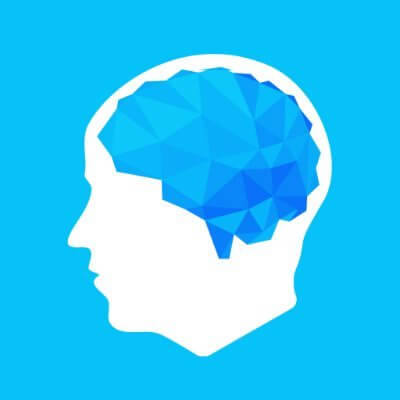What GenAI Tools Can and Can’t Do for Presentations
Carolyn Geason-Beissel/MIT SMR | Getty Images As generative AI emerges as an easy way to perform computer-generated research, writing, and editing all in one fell swoop, it’s tempting to marvel at how it might improve one of the harder parts of leadership: creating convincing presentations to sell ideas to various constituencies. We’re entering a new […]

Carolyn Geason-Beissel/MIT SMR | Getty Images

As generative AI emerges as an easy way to perform computer-generated research, writing, and editing all in one fell swoop, it’s tempting to marvel at how it might improve one of the harder parts of leadership: creating convincing presentations to sell ideas to various constituencies.
We’re entering a new era of communication. A leader’s role is bigger than presenting ideas — it’s translating complexity, inviting trust, and shaping a shared understanding. Audiences expect presenters to be authentic in real time and demonstrate that the talk was built just for them. A great presenter helps people feel something and believe something.
Generative AI tools can reduce the grind. They can help quickly adapt content for different audiences. Early GenAI adopters who used the technology to generate marketing content said they saved over 11 hours a week on editing tasks, such as refining the designs of images, infographics, and other visuals. But using those tools too early in the creative process also risks eroding the very skills that make communication powerful. If we rely too heavily on AI, we may lose the discomfort, intuition, and ability to iterate that sharpen our thinking.
What makes a presentation message resonate isn’t just clarity. It’s connection. And that comes from human skills — not AI outputs.
Three Presentation Skills AI Can’t Emulate
For communicators to stand out in the AI era, they must double down on three capabilities that machines cannot replicate: strategic message design, creative judgment, and empathy.
Expert presenters first need a clear strategic message that invents big future narratives for their audience, whether that’s their own organization, outsiders, or something in between. Without imagination, strategy will be uninspired and stall out. Second, a communicator needs creative judgment and the ability to frame and shape meaning that resonates. This is the difference between craft and AI — the difference between a moment that sparks resonance and just a grammatical, concise statement. Finally, empathy — when the presenter can sense what’s unspoken and adapt in real time — isn’t a nice-to-have. It’s a superpower. It can’t be outsourced to AI — not in a pitch, not in a crisis, and not in a moment that matters.
I call these three competencies the communicator’s advantage. (See “The Communicator’s Advantage: Three Presentation Skills AI Doesn’t Deliver.”) These are skills that leaders can’t afford to lose. Here’s how to develop each one.
Strategic Message Design
Strategy begins well before the first GenAI prompt is written. Strategic communicators shape messages that align with business goals, stakeholder priorities, and potential audience resistance. Generative AI can remix what’s known, but it can’t originate what’s next.
Strategic thinking is about charting where you want to take people — something no data set can define for you. As I said in my TEDxEast presentation “The Secret Structure of Great Talks,” it’s the communicator’s job to cast the future of “what could be” in a way that feels both possible and urgent.
To practice this, before you open a generative AI tool, think through the change you want to inspire. Clarify your goal, map your audience’s mindset, and sketch a few narrative arcs by hand, if that helps you process your ideas. Anchor your thinking. Then, if you’d like, use GenAI to explore or to challenge your thoughts. But generative AI can’t (and shouldn’t) define your future direction.
Creative Judgment
Generative AI can be used for testing ideas, but it backfires when outputs become derivative. The value that only a human can bring is taste, novelty, and cultural nuance.
Creativity isn’t just invention. It’s editing. It’s tone. It’s knowing that this phrasing will land well and that one will fall flat. GenAI can offer permutations — sometimes clever ones — but humans provide the pulse check, and creative presenters bring surprise and context.
To build this skill, don’t just accept generative AI’s initial text output. Ask yourself, “What will resonate with my audience?” Review GenAI outputs like a curator, not a consumer. Highlight and fix what feels flat, and rewrite key lines in your own voice. Speak the text out loud to hear whether it lands the way you want it to. Refine it until it feels alive and correct.
Even though AI image quality is improving quickly, I recommend caution when using generative AI to create illustrations or images for B2B presentations. My company tests such tools weekly, and most apps don’t create images that consistently comply with brand guidelines or quality expectations. So unless you have mastery of advanced image prompting, many GenAI images will, for now, be unusable for professional B2B presentations.
Empathy
Compassion and an understanding of an audience’s emotions are where truly transformational communication begins. Great presenters don’t just deliver — they tune in. They listen between the lines and adjust their message in the moment to meet the audience where it is. They pay attention to whether they’re being too analytical or too emotional.
GenAI can suggest clever phrasing for a presentation and can mimic a warm tone. But it can’t anticipate and then feel the tension in the room. It can’t recognize hesitation in a stakeholder’s body language. It doesn’t know when to pause — or when to push forward. AI imitates emotion but lacks authenticity.
AI might offer 10 versions of your opening gambit, but only you can choose the one that fits this moment, this audience, and this mission. Only you can bring audience awareness, presence, and live adaptability.
To prepare to present with empathy, start by asking some questions: What does this audience fear? What does it hope for? What pressures are audience members under? Draft your outline, then revise it while imagining how it will be received.
And then, when you’re making your presentation, commit to staying attuned: Breathe, observe, and pivot (in tone, in speed, in whether emotions or data should be highlighted), if needed.
Presentation Skills Matter More Now
While generative AI may improve how we draft text, it is also reshaping how we think. Our creative process is shifting. A lot of fresh thinking happens when we start from a literal blank page. When we skip that uncomfortable step and outsource the first draft to a machine, we end up shaping ideas by responding to what the machine offers. In that sense, AI is doing more than helping us write. It’s altering our critical thinking.
Business communicators need to be confident that their own skills still matter even when AI is capable of doing many steps in the process.
In my communication consultancy, we’re developing ways to help clients use AI while also leaning into their own aptitudes. We’ve built software that guides users so that they get AI output only after they’ve imagined what it’s like to walk in their audience’s shoes. My hope is that it will help clients think faster while keeping the empathy and soul of the message (relatively) human.
Machines can’t replicate the soft skills that will always set you and your ideas apart. Real influence will continue to be earned by the most strategic, creative, and empathetic leaders.





























































































































![Are AI Chatbots Replacing Search Engines? AI vs Google [New Research]](https://www.orbitmedia.com/wp-content/uploads/2025/05/How-often-are-we-using-AI-chatbots_.webp)






































